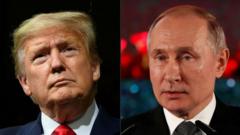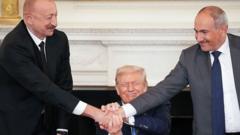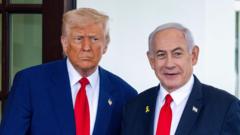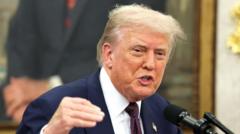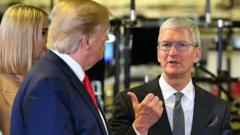**In a recent report, key economic figures challenge the veracity of President Trump's claims regarding substantial business investment while in office, revealing discrepancies and highlighting the complexities of actual economic growth.**
**The Truth Behind Trump's Bold Investment Assertions**
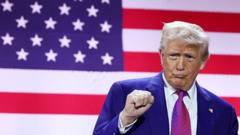
**The Truth Behind Trump's Bold Investment Assertions**
**Analyzing the Allegations of $12 Trillion in Business Investments Under Trump’s Presidency**
US President Donald Trump has frequently touted the enormous business investment figure of over $12 trillion during his presidency, attributing it to his policy agenda that includes tariffs, tax cuts, and deregulation. He asserts that these measures have significantly transformed the investment landscape in the United States. If accurate, such a figure would indeed mark a historic increase from the approximate $4 trillion in private investment recorded for the previous year.
However, analysts begin their assessment by noting that the current data available is still too premature to validate Trump's assertions. The U.S. government releases reports on business investments quarterly, and thus far, figures from January to March reflect only a minor elevation in spending, attributed partially to past events such as a Boeing strike. Economists like Nick Bloom, a professor at Stanford University, believe that investment may actually be modestly declining due to elevated uncertainty in the market rather than soaring as Trump claims.
One company, Swiss pharmaceutical giant Roche, recently announced plans for a $50 billion investment over five years, although much of its projects were already in the pipeline prior to Trump's presidency. There are concerns within the pharmaceutical sector regarding potential impacts from proposed policy changes, such as drug pricing reforms, which could derail these investment plans.
In illustrating his investment achievements, Trump often cites commitments from leading firms like Apple and Hyundai. Yet the current White House report indicates that total new investments stand at about $5.3 trillion—less than half of Trump's exaggerated claims. Furthermore, closer examination shows that around one-third of the investments listed were initiated prior to his administration, undermining claims of a surge attributed to his policies.
Research from Goldman Sachs paints a more sobering picture: actual investments from these announcements may only total between $30 billion and $134 billion when excluding projects that are unlikely to advance—a far cry from the figures being heralded.
Despite proddings about the inflated numbers, White House representatives have downplayed these discrepancies and continued to assert that the administration's approach is effective at driving investment. Many of the companies contacted for clarification of their investments either did not respond or confirmed that their plans were partially established before Trump took office.
The instinct to promote optimistic investment figures is not unusual, but experts believe the current administration's drastic economic interventions, including tariffs, may encourage companies to issue inflated announcements that serve to curry favor with the president. Some economists note that while tariffs may spur certain industries to increase production within the U.S., they are unlikely to resolve deeper systemic issues like industry consolidation and shifts in investment focus from physical manufacturing to digital solutions.
In conclusion, while President Trump expresses strong intentions to enhance U.S. investment, analysts stress that his methods and policies may not be the most effective approach to achieving sustainable economic growth, with many forecasting a slowdown in investment growth due to ongoing policy uncertainties.


